Treatment
What are the different types of orthodontics for?
Orthodontists have different types of orthodontics depending on the problem they want to treat.
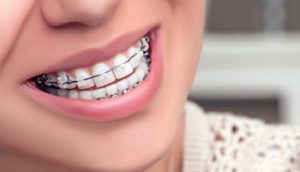
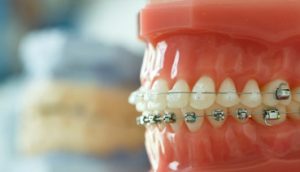
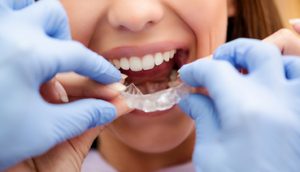
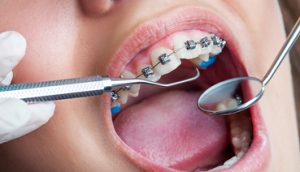
Though an orthodontist can enhance a smile at any age, there is an optimal time period to begin treatment. By the age of 7, the first adult molars erupt, establishing the back bite. During this time, an orthodontist can evaluate front-to-back and side-to-side tooth relationships. For example, the presence of erupting incisors can indicate possible overbite, open bite, crowding or gummy smiles. Timely screening increases the chances for an incredible smile.
Even if you missed the chance to have orthodontic treatment as a child, it is never too late to have a perfect, healthy smile. More adults are seeking orthodontic treatment than ever before. An attractive smile is an asset which will help you in both your personal and professional life. It is one of the best investments you can make for your self-confidence and your health.
What are the different types of orthodontics for?
Orthodontists have different types of orthodontics depending on the problem they want to treat.
It pretends to act before the appearance of deviations when the diagnosis indicates that these are going to take place preventing the normal development of the mouth. It is based on the use of dental wear techniques and removable appliances that facilitate proper oral growth.
It is usually applied in children in whom problems of malocclusion are detected early and is accompanied by the correction of harmful habits such as sucking the finger or using a pacifier after three years.
The most used treatments are the space retainers, the extraction of some pieces and the palate expanders.
It is a type of child orthodontics that is placed in children between six and eleven years of age. It serves to guide growth and / or correct the development of your bones (upper jaw and mandible).
In other words, what is intended is to control and balance both the position and the size of the maxillary bones.
The age range in which it is used is not casual, but responds to the fact that, at such an early stage in life, the jaw bones are forming and, therefore, are still “moldable”.
And, in addition, this is the period known as “mixed dentition”, which is the time when milk teeth – also called temporary teeth – coexist with permanent ones, which start to emerge little by little.
The fundamental objective of functional orthodontics is to get the bones to have an adequate position and size. In this way, health, functionality, dental aesthetics and facial appearance will be improved.
Since during childhood, the bones are still in the growth phase, you can intervene in them. The main benefit of this, therefore, is that we avoid complications and anomalies in the future, when the person is already an adult and their jaw bones have completely developed.
Depending on the type of correction we want to make, there are different treatments. The most used are the following:
Bionator: device to stimulate the mandibular growth
Extra oral anchorage: facial arch that is held in the neck and stops the growth of the maxilla
Herbst: device used when the growth phase is about to conclude but it is necessary to reduce the distance between jaw and maxilla
Facial mask: serves to stimulate the growth of the maxillary bone and is combined with the use of a circuit breaker (an expander used to correct the crossbite)
Chin: it is placed in the jaw and used to slow down its growth
McNamara circuit breaker: cemented to the palate and its function is to open it in cases of having a compressed maxilla
Two-band circuit breaker: appliance placed on the palate with a central screw. Its objective is the same as that of the McNamara circuit breaker: expanding the maxilla and correcting a narrow palate with a crossbite
Once the treatment is finished, it will be necessary to place a removable retention device to maintain the results: the Hawley plate. As we will see in the next image, it consists of an acrylic palate with hooks
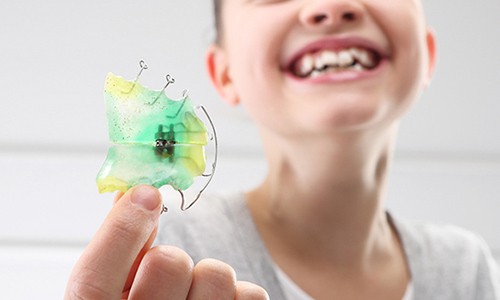
It is used when the orthodontic or malocclusion problem is already established and there has been an alteration in the normal development of the mouth. The deformations usually affect the palate and the dental arches, so it is necessary to combine removable and fixed appliances to correct problems little by little and giving the mouth a morphological normality and aligning the pieces at the same time.
Traditional orthodontics has always consisted of putting clamping braces that rest on the teeth and use a metal bracket. This type of brackets are also called fixed brackets. Although recent innovations in orthodontics are still the most used due to their great versatility. The use of metal brackets helps orthodontists to place their teeth in their most correct position and that is not always possible with the most modern orthodontic systems.
Con los brackets metálicos se pueden tratar la mayoría de problemas de ortodoncia:
With the metal brackets most orthodontic problems can be treated:

Ceramic braces are a type of orthodontics much more discreet than conventional brackets. Thanks to this, the devices with these ceramic brackets are a perfect solution for patients who, in addition to the final result of their orthodontics, value the appearance of their smile while they are being treated.
Ceramic brackets are made from materials similar to porcelain, such as lithium disilicate, which have been approved for sanitary use. Unlike the traditional metal brackets, the ceramic brackets become almost imperceptible between the patient’s teeth, due to their ivory color hue.
But a better aesthetic does not mean worse results: ceramic brackets are as effective as conventional dental braces when it comes to correcting all kinds of teeth bite or alignment problems and are suitable for all types of patients who need orthodontics. recommendation of your dentist.
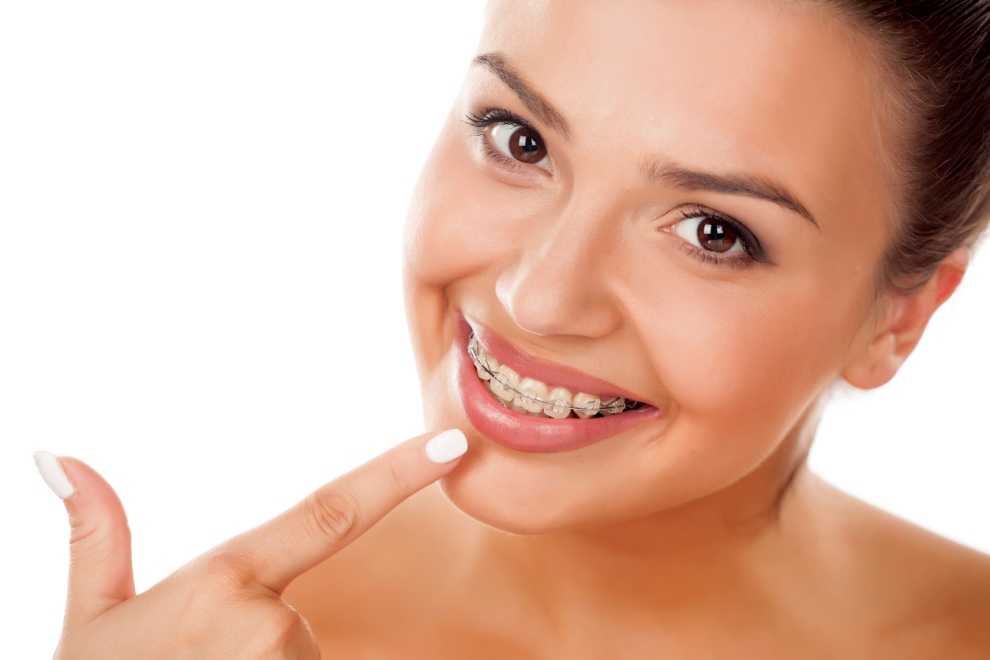
It is an invisible orthodontics. Designed to improve our oral health being the most discreet orthodontic treatment of those that exist.
Composed of splints for the teeth, constructed with various aligners to correct the bad position of the teeth.
The splints are comfortable and aesthetic.
Its mission is to place the teeth and we achieve aesthetics during orthodontic treatment.
Who performs these treatments?
It has to be in an orthodontic clinic and who is responsible for performing this treatment is an orthodontist and with a specific course of invisaling.
The Invisalign aligners move the teeth thanks to the application of precise forces to achieve a controlled movement of the tooth. It is an orthodontic treatment without brackets.
Unlike traditional braces, Invisalign not only controls the degree of movement by aligner, but also the time involved in this movement.
At each stage, only the movement of certain teeth is allowed, according to the Invisalign treatment plan for that particular stage.
With this treatment plan results an efficient system of force application that moves the teeth to the desired position.
They are thermoplastic, their use is exclusively medical and of high resistance, developed for the Invisalign system.
The aliniadores are made to your measure and they adjust to each tooth and each case.
For Invisalign, the most important thing is your identity. That is why the treatment has to pass a mandatory standard in which each orthodontist with “official number” has to send the molds to the USA and wait for the personalized splints / aligners to arrive. patient.
In adolescence and adulthood it can be treated in its vast majority.
In children ages would have to study our orthodontist and once assessed could indicate which method would be the most advisable.
The types of orthodontics indicated for adult orthodontics or orthodontics children is better than consult with our orthodontist as it will explain why each case and what type of orthodontics is more suitable
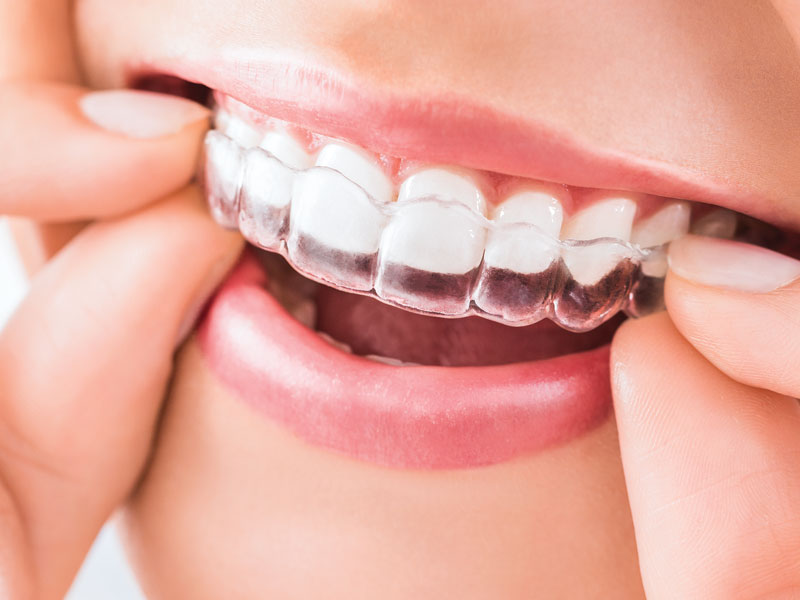


-(011 52) 878 782 4848 -878 782 8383

210 401 22 56

Odontologia Pediatrica

-(011 52) 878 782 4848 -878 782 8383

210 401 22 56

Odontologia Pediatrica




Though an orthodontist can enhance a smile at any age, there is an optimal time period to begin treatment. By the age of 7, the first adult molars erupt, establishing the back bite. During this time, an orthodontist can evaluate front-to-back and side-to-side tooth relationships. For example, the presence of erupting incisors can indicate possible overbite, open bite, crowding or gummy smiles. Timely screening increases the chances for an incredible smile.
Even if you missed the chance to have orthodontic treatment as a child, it is never too late to have a perfect, healthy smile. More adults are seeking orthodontic treatment than ever before. An attractive smile is an asset which will help you in both your personal and professional life. It is one of the best investments you can make for your self-confidence and your health.
What are the different types of orthodontics for?
Orthodontists have different types of orthodontics depending on the problem they want to treat.
It pretends to act before the appearance of deviations when the diagnosis indicates that these are going to take place preventing the normal development of the mouth. It is based on the use of dental wear techniques and removable appliances that facilitate proper oral growth.
It is usually applied in children in whom problems of malocclusion are detected early and is accompanied by the correction of harmful habits such as sucking the finger or using a pacifier after three years.
The most used treatments are the space retainers, the extraction of some pieces and the palate expanders.
It is a type of child orthodontics that is placed in children between six and eleven years of age. It serves to guide growth and / or correct the development of your bones (upper jaw and mandible).
In other words, what is intended is to control and balance both the position and the size of the maxillary bones.
The age range in which it is used is not casual, but responds to the fact that, at such an early stage in life, the jaw bones are forming and, therefore, are still “moldable”.
And, in addition, this is the period known as “mixed dentition”, which is the time when milk teeth – also called temporary teeth – coexist with permanent ones, which start to emerge little by little.
The fundamental objective of functional orthodontics is to get the bones to have an adequate position and size. In this way, health, functionality, dental aesthetics and facial appearance will be improved.
Since during childhood, the bones are still in the growth phase, you can intervene in them. The main benefit of this, therefore, is that we avoid complications and anomalies in the future, when the person is already an adult and their jaw bones have completely developed.
Depending on the type of correction we want to make, there are different treatments. The most used are the following:
Bionator: device to stimulate the mandibular growth
Extra oral anchorage: facial arch that is held in the neck and stops the growth of the maxilla
Herbst: device used when the growth phase is about to conclude but it is necessary to reduce the distance between jaw and maxilla
Facial mask: serves to stimulate the growth of the maxillary bone and is combined with the use of a circuit breaker (an expander used to correct the crossbite)
Chin: it is placed in the jaw and used to slow down its growth
McNamara circuit breaker: cemented to the palate and its function is to open it in cases of having a compressed maxilla
Two-band circuit breaker: appliance placed on the palate with a central screw. Its objective is the same as that of the McNamara circuit breaker: expanding the maxilla and correcting a narrow palate with a crossbite
Once the treatment is finished, it will be necessary to place a removable retention device to maintain the results: the Hawley plate. As we will see in the next image, it consists of an acrylic palate with hooks

It is used when the orthodontic or malocclusion problem is already established and there has been an alteration in the normal development of the mouth. The deformations usually affect the palate and the dental arches, so it is necessary to combine removable and fixed appliances to correct problems little by little and giving the mouth a morphological normality and aligning the pieces at the same time.
Traditional orthodontics has always consisted of putting clamping braces that rest on the teeth and use a metal bracket. This type of brackets are also called fixed brackets. Although recent innovations in orthodontics are still the most used due to their great versatility. The use of metal brackets helps orthodontists to place their teeth in their most correct position and that is not always possible with the most modern orthodontic systems.
Con los brackets metálicos se pueden tratar la mayoría de problemas de ortodoncia:
With the metal brackets most orthodontic problems can be treated:

Ceramic braces are a type of orthodontics much more discreet than conventional brackets. Thanks to this, the devices with these ceramic brackets are a perfect solution for patients who, in addition to the final result of their orthodontics, value the appearance of their smile while they are being treated.
Ceramic brackets are made from materials similar to porcelain, such as lithium disilicate, which have been approved for sanitary use. Unlike the traditional metal brackets, the ceramic brackets become almost imperceptible between the patient’s teeth, due to their ivory color hue.
But a better aesthetic does not mean worse results: ceramic brackets are as effective as conventional dental braces when it comes to correcting all kinds of teeth bite or alignment problems and are suitable for all types of patients who need orthodontics. recommendation of your dentist.

It is an invisible orthodontics. Designed to improve our oral health being the most discreet orthodontic treatment of those that exist.
Composed of splints for the teeth, constructed with various aligners to correct the bad position of the teeth.
The splints are comfortable and aesthetic.
Its mission is to place the teeth and we achieve aesthetics during orthodontic treatment.
Who performs these treatments?
It has to be in an orthodontic clinic and who is responsible for performing this treatment is an orthodontist and with a specific course of invisaling.
The Invisalign aligners move the teeth thanks to the application of precise forces to achieve a controlled movement of the tooth. It is an orthodontic treatment without brackets.
Unlike traditional braces, Invisalign not only controls the degree of movement by aligner, but also the time involved in this movement.
At each stage, only the movement of certain teeth is allowed, according to the Invisalign treatment plan for that particular stage.
With this treatment plan results an efficient system of force application that moves the teeth to the desired position.
They are thermoplastic, their use is exclusively medical and of high resistance, developed for the Invisalign system.
The aliniadores are made to your measure and they adjust to each tooth and each case.
For Invisalign, the most important thing is your identity. That is why the treatment has to pass a mandatory standard in which each orthodontist with “official number” has to send the molds to the USA and wait for the personalized splints / aligners to arrive. patient.
In adolescence and adulthood it can be treated in its vast majority.
In children ages would have to study our orthodontist and once assessed could indicate which method would be the most advisable.
The types of orthodontics indicated for adult orthodontics or orthodontics children is better than consult with our orthodontist as it will explain why each case and what type of orthodontics is more suitable
